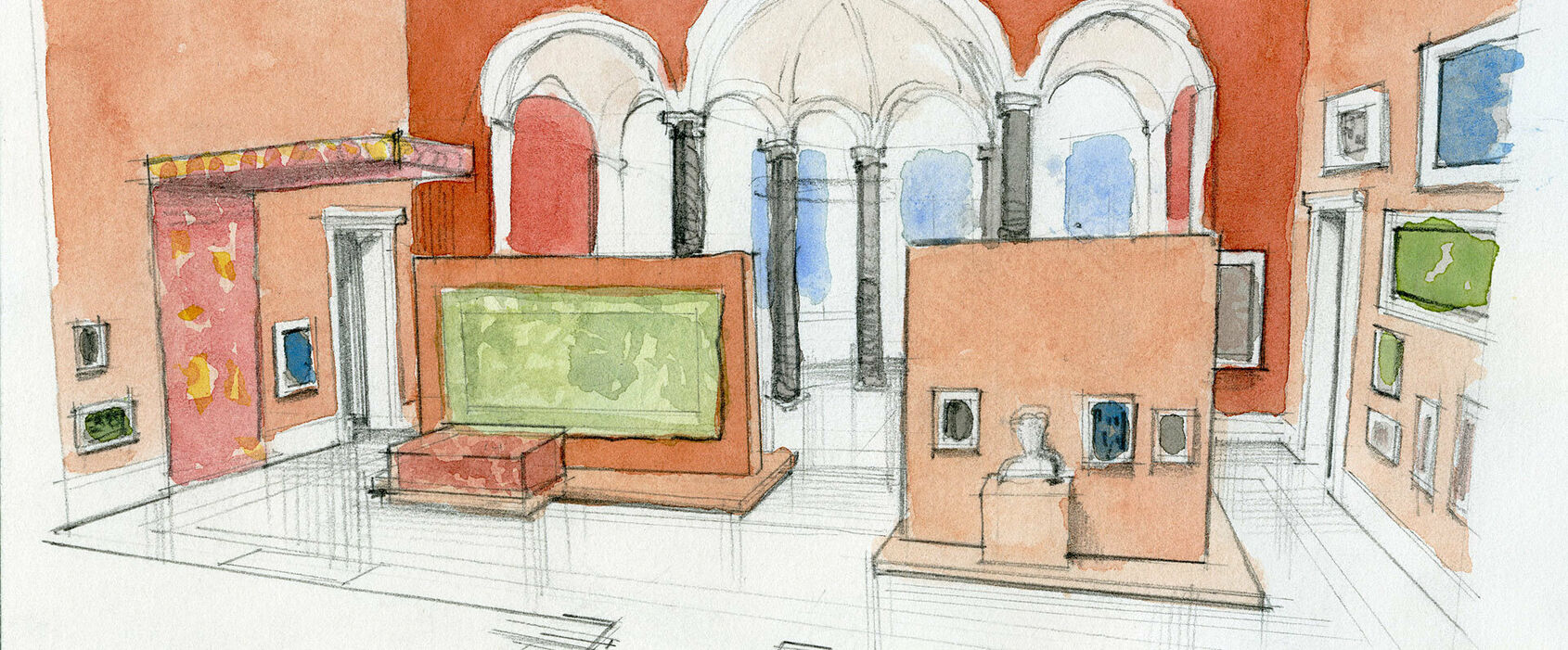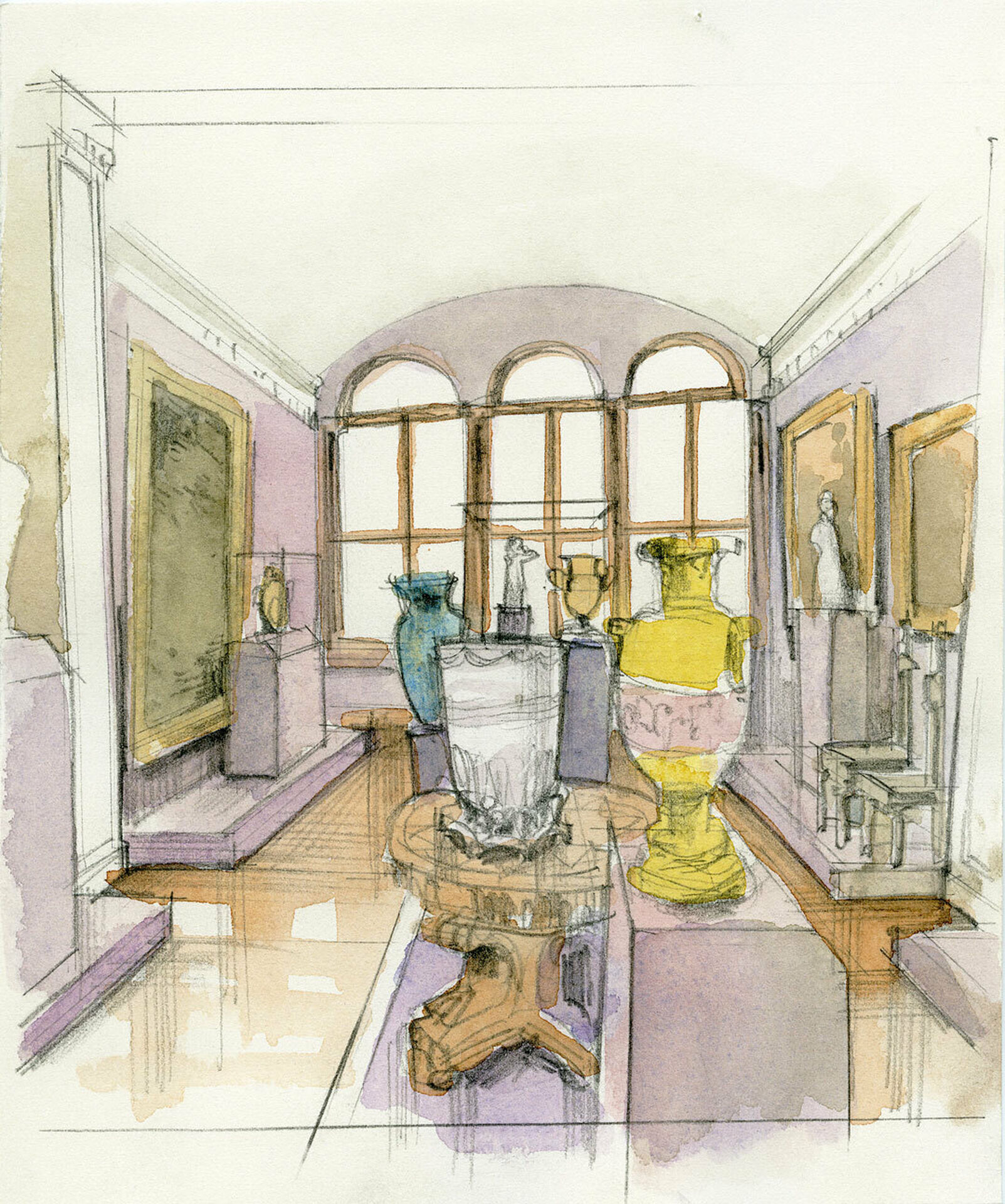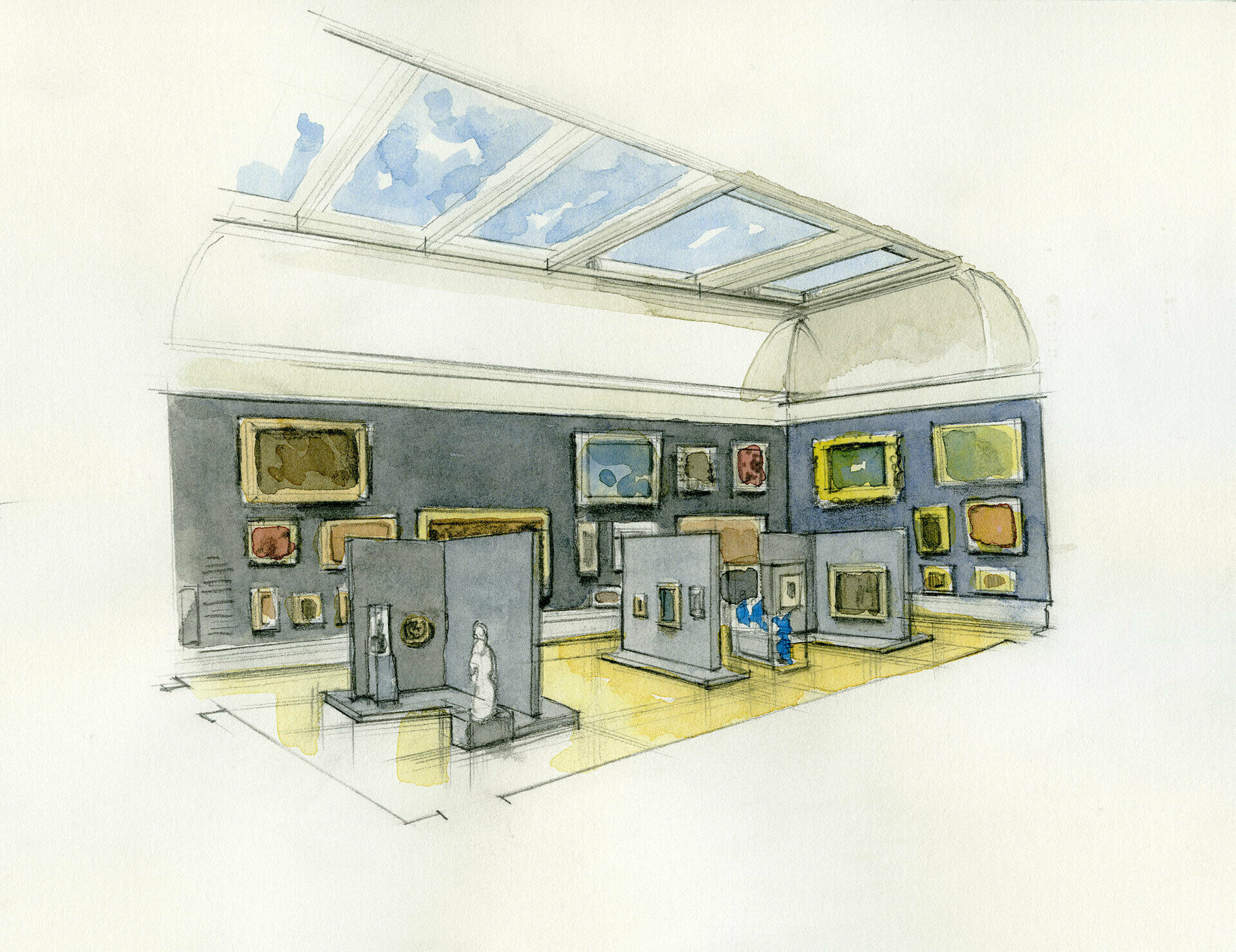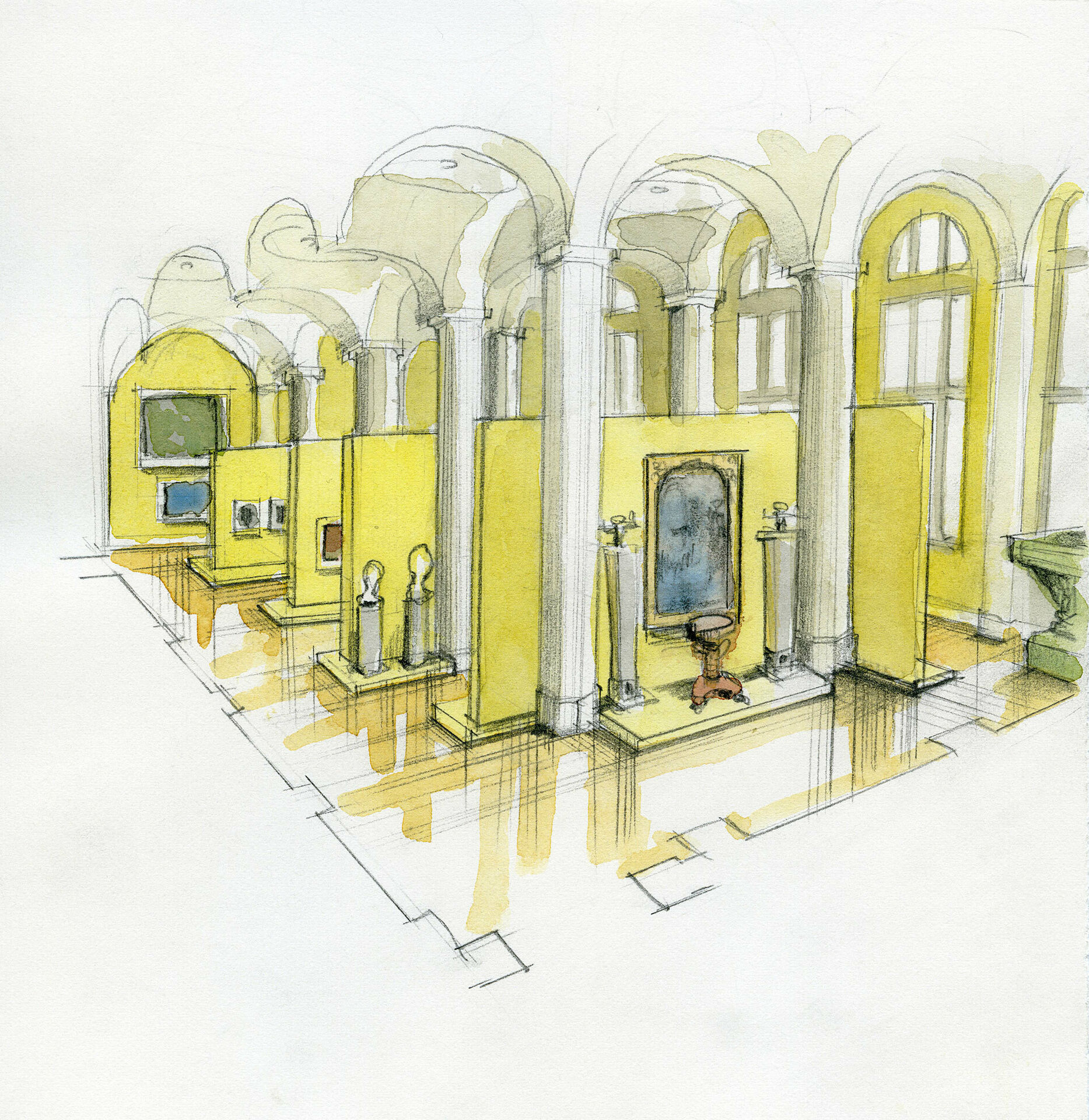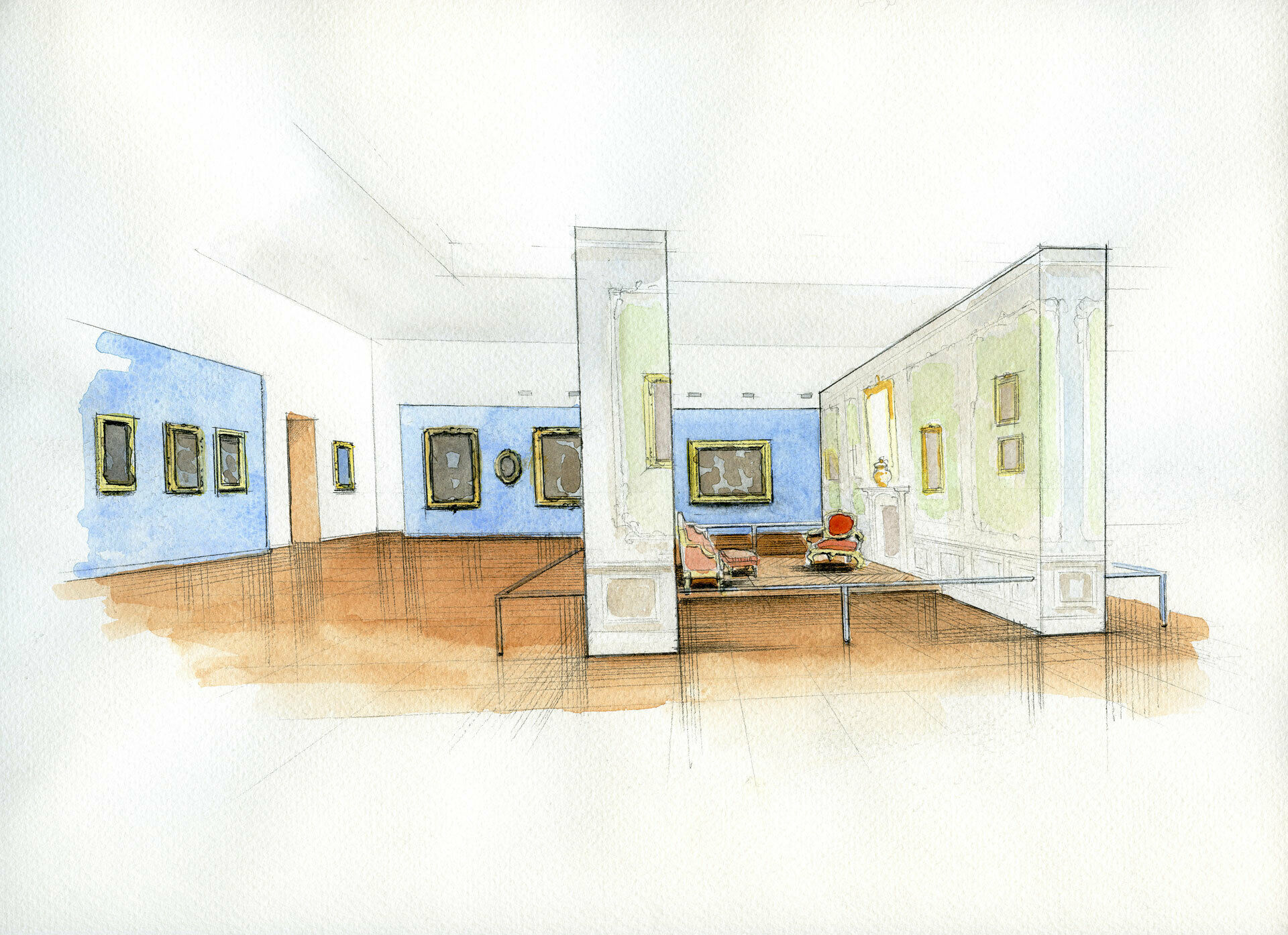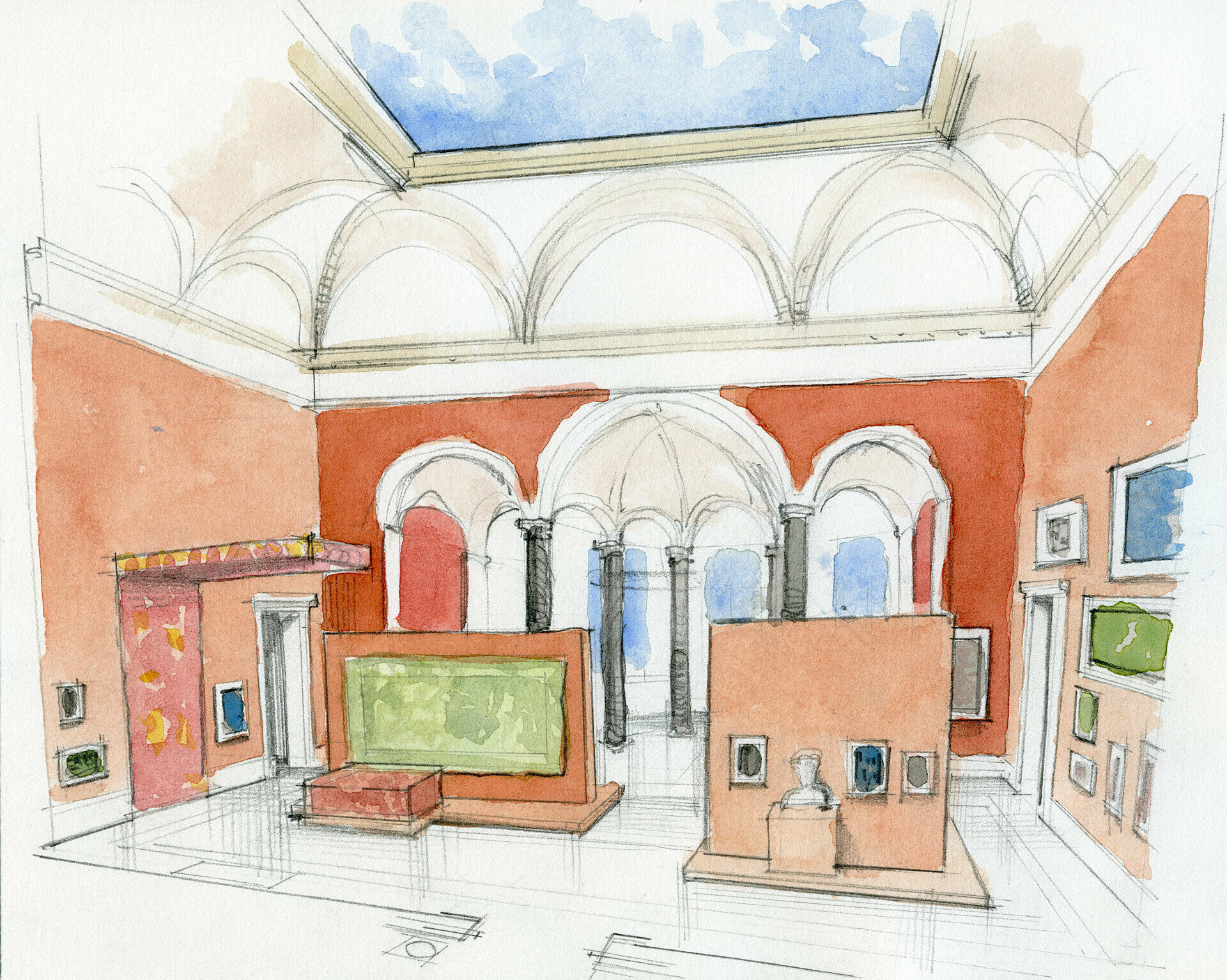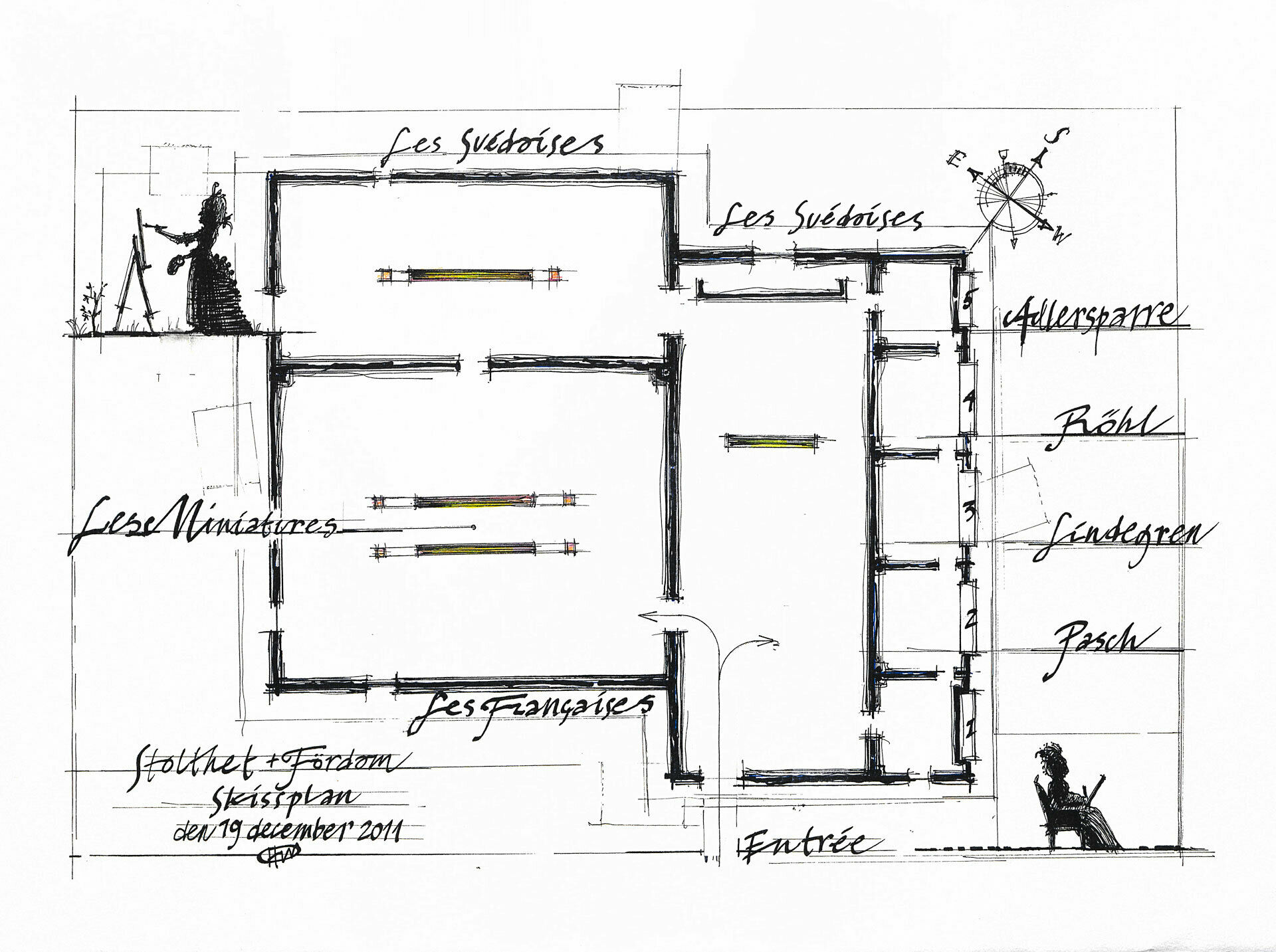In recent years, exhibition scenography has become increasingly important to museums in presenting art. In this small exhibition you found a selection of sketches and models, made by scenographer Henrik Widenheim, from a few of Nationalmuseum’s exhibitions.
Since the 1940s, Nationalmuseum has regularly consulted designers to communicate the narratives and themes of our temporary exhibitions. The same goes for any major changes of the presentation of the collection, such as the Timeline, showing art from the 16th century to today, which opened in autumn 2018 after the extensive refurbishment of the museum building.
Henrik Widenheim
One of these designers is Henrik Widenheim (b. 1961). Widenheim studied at the Brera Academy in Milan in 1984–1988 and had his first assignment for Nationalmuseum in 1996. Since then, he has worked on several exhibitions, both at Nationalmuseum in Stockholm and at other venues in Sweden and abroad.
Sketches and models
In the Old Library display cabinets, you found a selection of Henrik Widenheim’s working material. It consists of sketches and models from a few of Nationalmuseum’s exhibitions such as Carl Fabergé (summer and autumn 1997), Alexander Roslin (autumn 2007), Henri de Toulouse Lautrec (spring 2008), Peredvizhniki (autumn 2011), Carl Larsson – Friends and Enemies (summer 2013, at the Royal Academy of Arts), Close to Nature (summer 2021 at Läckö Castle), Ideals and Reality – Nordic Nature (now on show at Nationalmuseum Jamtli). Also included were materials from the making of the Timeline, the exhibition of the Museums' collections.
Scenography – an important part of the exhibitions
Exhibition scenography has become increasingly important in presenting art. It creates spaces and moods that can enhance the overall visitor experience and bring out the individual works. The designer needs to consider the exhibition contents and themes, the gallery architecture, its lighting, colours, and visitor flows. The exhibition evolves in close consultation with the curator and other team members.
Sketches and models serve as communication tools for everyone involved in the process. They are used for planning and for illustrating proportions and relationships in the galleries. Working with models helps to identify design challenges and potential more clearly. Earlier, sketches and models were the only tools supporting the design process. Today, the Museum’s exhibition designers mainly use digital design software. Recycling and sustainability have become crucial aspects, and material is often repurposed for new exhibitions. The display cabinets showed examples of how every project is different, and every exhibition presents new challenges.
The Old Library
In the Old Library, material from the Art Library and the archives of the Nationalmuseum is exhibited. Graphic design and Swedish book production are also highlighted.
Find out more about the Old Library and the new interior design by Emma Olbers.
